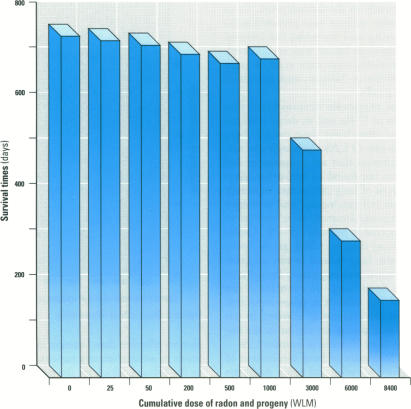- Record: found
- Abstract: found
- Article: not found
Carcinogenic and Cocarcinogenic Effects of Radon and Radon Daughters in Rats.

Read this article at
Abstract
It has been previously established that lung cancer could be induced in rats by exposure to radon and radon daughters. Although the oat-cell carcinomas that are common in humans were not found in rats, other histological types of lung carcinomas, especially squamous cell carcinomas and primitive lung adenocarcinomas, were similar to those observed in humans. A dose-effect relationship was established for cumulative doses varying from 25 to 3000 working-level-months (WLM), which was similar for medium and high cumulative doses to that observed in uranium miners. This experimental protocol was also used to study the potential cocarcinogenic effects of other environmental or industrial airborne pollutants such as tobacco smoke, mineral fibers, diesel exhausts, or minerals from metallic mine ores that may act synergistically with radon exposure. In rats exposed to radon and tobacco smoke combined, the incidence of lung cancers was higher by a factor of 2-4 according to the cumulative radon exposure and the duration of tobacco smoke exposure. When mineral fibers were injected intrapleurally, an increased incidence of malignant thoracic tumors was observed in rats exposed to radon and fibers combined, but synergistic effects resulted in additivity. With diesel exhausts or minerals from metallic ores, a slight, nonsignificant increase in the incidence of lung carcinomas was observed compared with rats exposed to radon alone. These results demonstrated that it is possible to establish the potential cocarcinogenic action, showing either multiplicative, additive, or no effect of various environmental or industrial airborne pollutants combined with radon exposure. This radon model is valid for investigating possible interactions between two occupational exposures.






